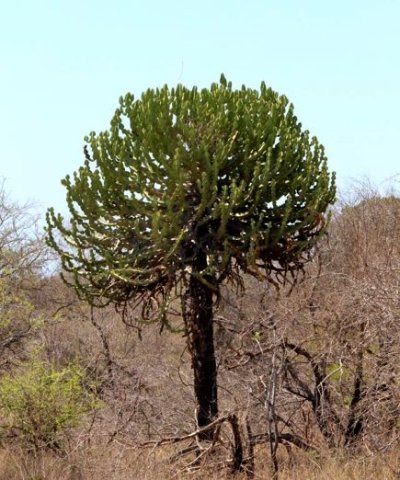Euphorbia cooperi

Author: Ivan Lätti
Photographer: Eric Aspeling
Euphorbia cooperi, commonly known as the bushveld candelabra tree, is a spiny, stem succulent tree that becomes up to 7 m tall (SA Tree List No. 346). The stem of a mature tree may become naked up to about 3 m below the first and longest branches, curving up at their tips. There are holes in the grey, rough bark of the bare stem down below, left by the oldest branches continually dropping off and replaced by new ones at the top. Upper branches curve up progressively earlier, forming the rounded crown of similarly spaced stem-tips pointing up.
The dangerous white latex of this tree is one of the plant substances used in Africa for poisoning fish, paralysing them for easier catching. The sap can cause blindness if it gets in the eye. E. cooperi is sometimes called the deadliest of all the Euphorbia trees.
The species distribution is in all provinces north of the Vaal River and KwaZulu-Natal, as well as widespread in southern Africa.
The habitat is rocky outcrops in wooded grassland and scrub. The species is not considered threatened in habitat early in the twenty first century (Frandsen, 2017; Smith, et al, 2017; Coates Palgrave, 2002; Schmidt, et al, 2002; Grant and Thomas, 1997; Pooley, 1993; iNaturalist; http://redlist.sanbi.org).

